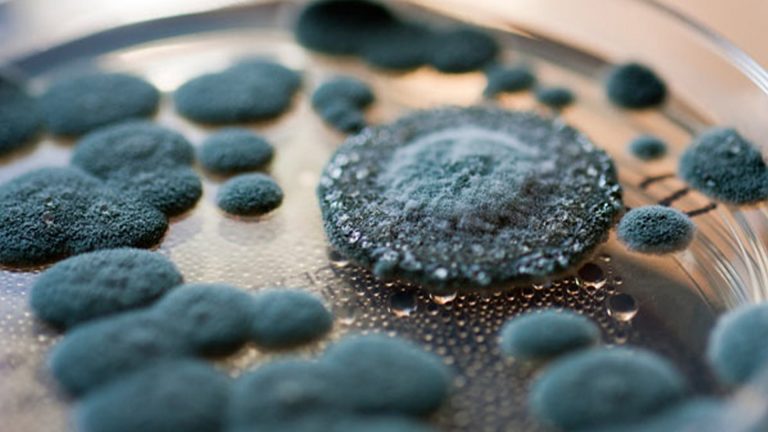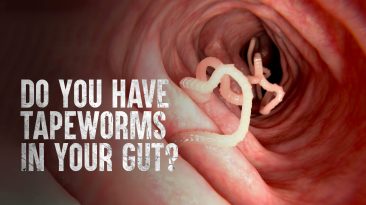Um mold. What? Yup, some mold is delicious, like the one in blue cheese. But what about that strawberry you just bit into, what is that strange flavor? Could that be mold? Suddenly, you have a rash all over your skin. You feel nauseous, your eyes flood with tears, and you can’t breathe. Oh no! Are you going to die? Not today, my friend.
Just for some perspective, the first antibiotic, penicillin, comes from a mold. But most molds are not delicious or helpful, and those are the ones you need to watch out for.
Mold is a microscopic fungus. It can grow in plant and animal products. It spreads fast, and you can identify it on some contaminated surfaces as dark green stains. But it could be much harder to spot on other things.
Mold produces mycotoxins, a poisonous toxin that can cause many severe health effects in humans. And in some circumstances, it could be fatal. Mold is especially dangerous if your immune system doesn’t work well, or you have a respiratory disorder. But anyone can suffer from mold poisoning.
How can you prevent it? What are the symptoms of mold poisoning? What foods can it grow in?
Step 1: Don’t go nuts
Aflatoxins are the most dangerous kinds of mycotoxins. They’re cancer-causing. And they can grow in nuts, peanuts, corn, and cereals, before and after harvesting. Those cancer causing baddies, the aflatoxins, grow in hot and humid weather, so they could start developing more often due to climate change.
Step 2: Inspect your goodies
Some kinds of mold are safe to eat. We use mold in some tasty foods, like Roquefort, Gorgonzola, or Camembert cheeses. But dangerous molds can grow in every fruit, vegetables, and in cured or cooked meats. So you need to check every thing. Even processed foods in glass jars can contain poisonous mold. Look for soft spots, or places where your food changes color, especially if they’re green, black, grey, or white. If you find some at your grocery store, warn the manager.
Step 3: Mold is nothing to sniff at
You might notice an “off” smell from moldy food. Mold spores travel through the air, so if you see a mold stain, don’t sniff it. You can get really sick from mold spores, as Gina López found out. After two years of living in her apartment in New Mexico, she had chronic headaches, mood swings, depression, and many allergies. She even developed asthma. Many doctors tried to find the source of her ailments, and failed. Finally, she tested the air quality in her home, and found high levels of toxic mold. Now she’s recovering, thanks to the correct treatment, and lots of cleaning.
Step 4: Ditch it
If you find mold on any food, you need to throw the food away. Fast. Mold spreads quickly through the air, and it grows deep roots in food. Even if you cut it out, mold toxins can remain in the deeper layers of food, and in your refrigerator. If you find any mold, throw that delicacy away, and clean your whole fridge or pantry. And even if it looks fuzzy and soft, you don’t want to touch mold either.”
Step 5: Stay healthy
OK. Mold could be hazardous, but if you have a healthy immune system, you can survive it. Of the estimated 100,000 species of mold, only about 80 are considered harmful to humans. But you still don’t want mold to trigger an asthma attack, or other symptoms. Great. You survived eating that moldy snack, but remember that the best remedy for mold poisoning is to stay healthy. Consult your doctor if you feel sick. Self-medicating is dangerous, and it could lead to your body resisting antibiotics.
Sources
- “How Does Mold Grow On Cheese?”. Lauren Farrelly. 2020. Sciencing.
- “Is Moldy Food Dangerous? Not Always”. 2020. Healthline.
- “Mycotoxins”. 2018. who.int.
- “Molds on Food: Are They Dangerous?” 2020. fsis.usda.gov.
- “Understanding Mold, Food, and Penicillin Allergies”. Daniel, More. 2020. Verywell Health.
- “Interview With Toxic Mold Survivor: Gina Lopez | Got Mold?™”. 2018. Got Mold?™.


















